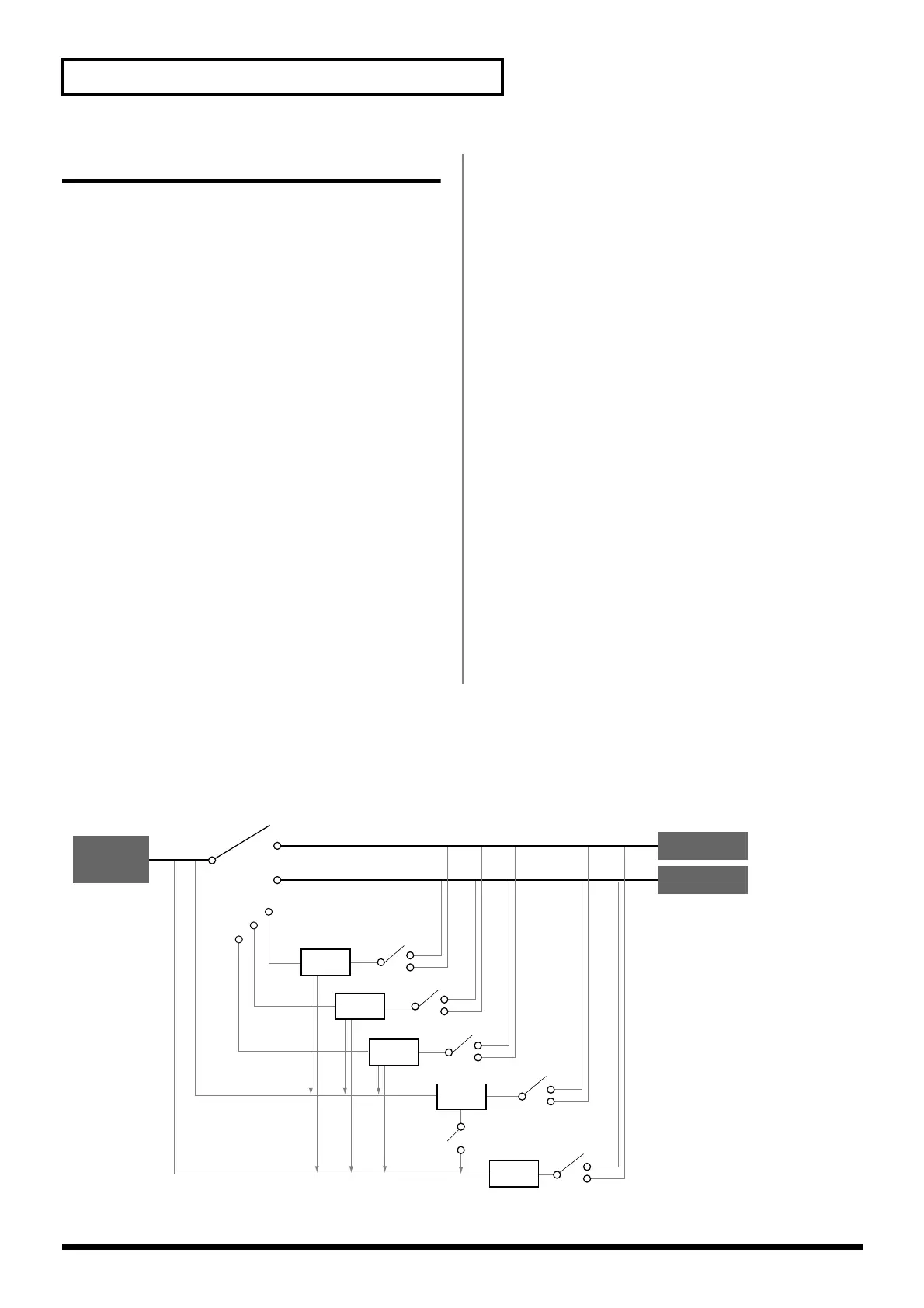72
Chapter 4 Using the XV-5050 Effects
Performance Mode Settings
Three different Multi-effects can be used in a Performance.
Select which of these three Multi-effects to use with Part Output
MFX Select. With this parameter, the same Multi-effects are applied
to all selected Parts. You can adjust the amount of effect to be
applied to the Parts by adjusting their Send Levels to each of the
effect units.
The Send Level setting for each Tone can also influence effect
intensity.
Furthermore, you can take the Multi-effects you have applied to a
Patch in a Part and apply them to the entire Performance, or just part
of the Performance.
Basic Process of Making Effects
Settings
When applying effects in Performance mode, the following
procedure is used to make the settings.
1.
Setting the Output Method Used by the Direct Sound (Output
Assign)
Settings determining whether or not the signal passes through
the Multi-effects, the jack used to output the sound, and the type
of output (stereo or mono) for each Part. You can also settings
for a Patch or Rhythm Set assigned to a Part. -> (p. 73)
2.
Setting the Amount of Each Effect Applied (Send Level)
Sets the level (volume) of each effect signal to be sent for each
Part. -> (p. 73)
3.
Making Multi-Effects Settings
Select the type of Multi-effects to be used, and set the parameters
for the selected Multi-effect. You can also Multi-effects settings
for a Patch or Rhythm Set assigned to a Part. -> (pp. 74–101)
4.
Setting the Multi-Effects Controller
When using MIDI messages to change the Multi-effects
parameters in realtime, select the Multi-effects controller. -> (p.
74)
5.
Setting the Output Destination and Volume for the Sounds
Passing Through the Multi-Effects
Select the output jack and set the output level (volume) of the
sounds passing through the Multi-effects. You can also apply
Chorus or Reverb to the sound that passes through Multi-effects.
-> (p. 74)
6.
Making Chorus Settings
Select the Chorus type to be used, and set each of the parameters
for the selected Chorus. -> (p. 74, p. 102)
7.
Setting the Output Destination and Volume for the Sounds
Passing Through the Chorus
Select the output jack and set the output level (volume) of the
sounds passing through the Chorus. You can also apply Reverb
to the sound that passes through Chorus. -> (p. 74)
8.
Making Reverb Settings
elect the Reverb type to be used, and set each of the parameters
for the selected Reverb. -> (p. 74, p. 103)
9.
Setting the Output Destination and Volume for the Sounds
Passing Through the Reverb
Select the output jack and set the output level (volume) of the
sounds passing through the Reverb. -> (p. 74)
Audio Signal Flow
The audio path of direct sounds or sounds that have been passed through the effects in Performance mode is shown in the figure below.
fig.3-02
A
B
CHO
PART
OUTPUT A
OUTPUT B
REV
Output Assign
M-FX
Output Assign
Chorus
Output Assign
Reverb
Output Assign
M-FX A
M-FX B
M-FX C
XV-5050_e.book 72 ページ 2003年6月27日 金曜日 午後3時14分
